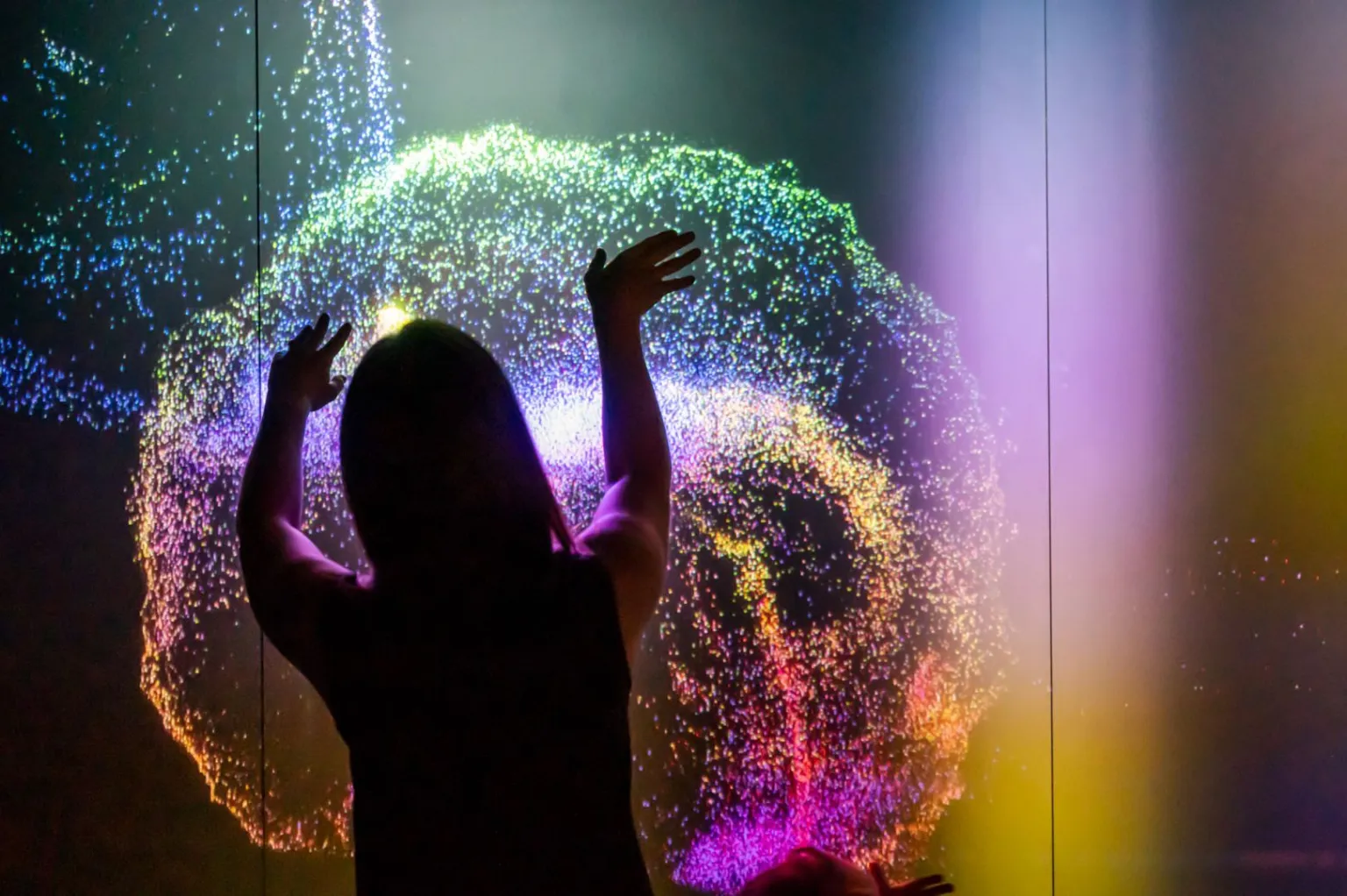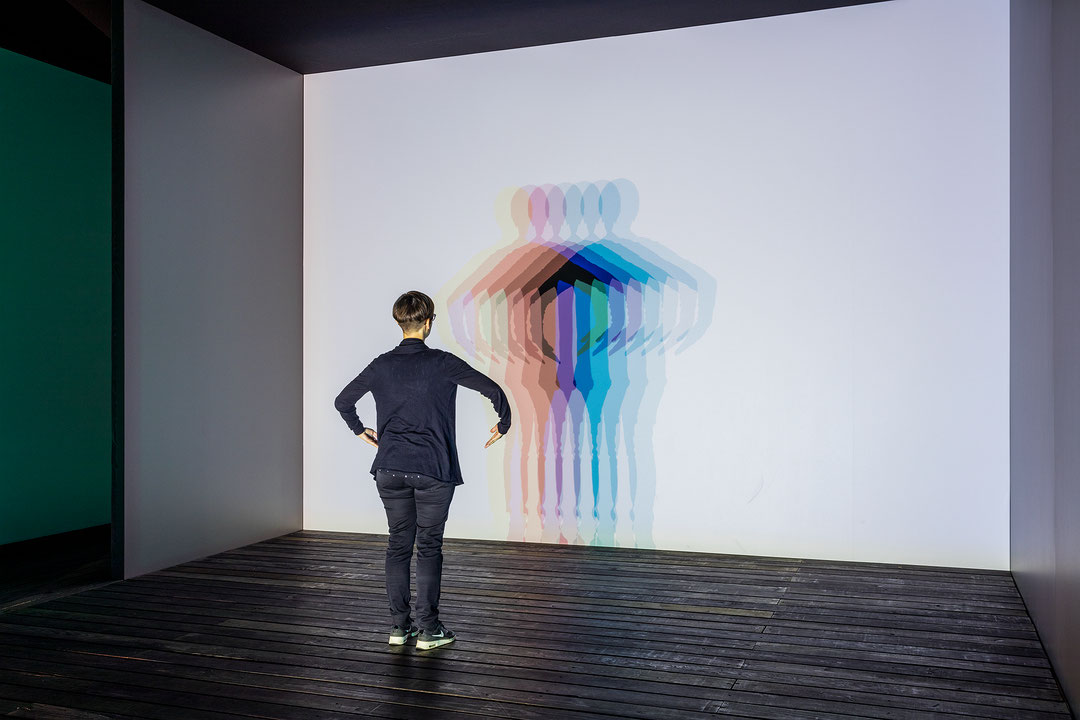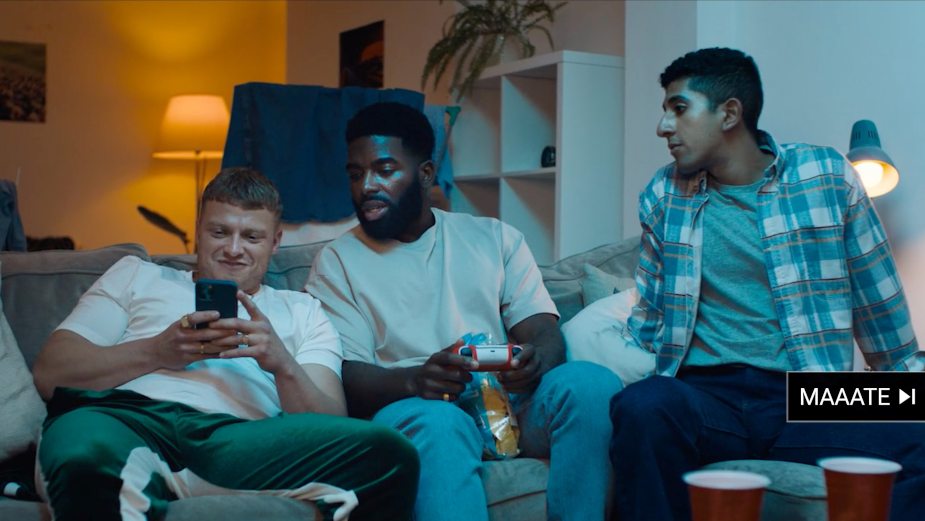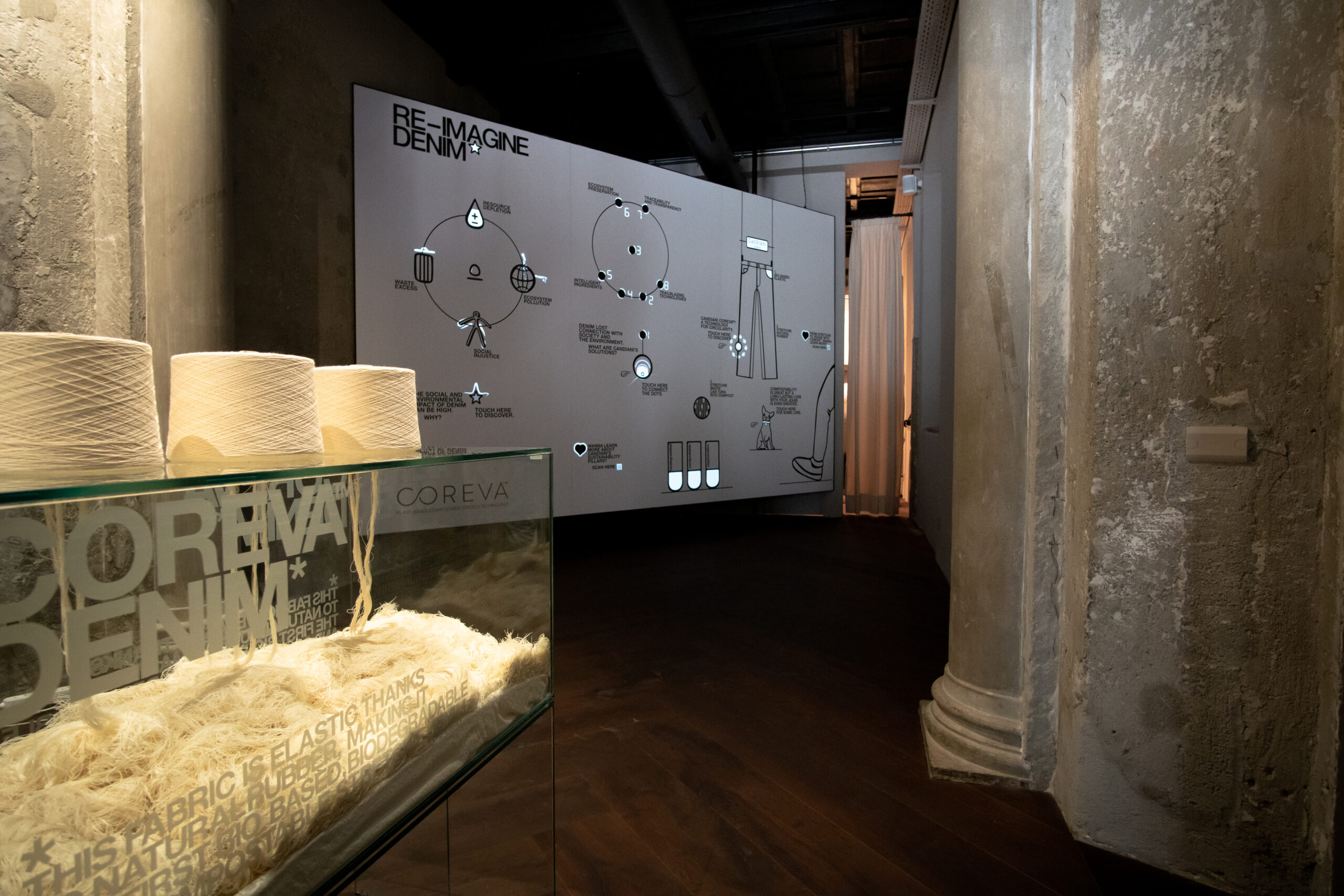INTERACTIVE COMMUNICATION
New media and their relationship with users
Neuroscience:
Art is interactive. Always has been.
Spectator involvement, more or less implicit, is an integral part of artistic ontology. In a sense, the spectator has never been passive, even when merely standing in front of a painting. For a long time, the spectator-artwork relationship only involved one of the human senses: sight.
However, throughout the twentieth century, with the emergence of new media and their progressive incursion into the artistic domain, artists have explored various possibilities for reception and dialogue with the artwork.
 Kojima Productions and The Mill, WALL, 2021
Kojima Productions and The Mill, WALL, 2021
New relationships between spectator and artwork
Studies on media conducted by Marshall McLuhan help to understand how spectator involvement, or interactivity, is an intrinsic element of some media and does not derive solely from their narrative contents. The scholar defines two categories of media based on the level of participation required by the user: hot media – less participatory, engaging only one sense and with “high-definition” messages – and cold media – engaging multiple senses and with “low-resolution” messages, thus requiring active participation from the user to complete their informational scope. Cold media therefore stimulate greater interaction from the user because they touch on both sensory and cognitive levels.
The role of the user has thus become more complex and multifaceted: from a mere passive observer, they have simultaneously transformed into both a manipulating subject and manipulated object. They are called upon to intervene, interpret, and modify what they are seeing in various ways, all aimed at deepening the concepts of representation and communication, sometimes creating new points of relation with the images. With interactive art, the paradigm of the user is overturned: they shift from questioning what the object of representation is to what their own relationship with the artwork is. Thus, we move out of the realm of representation and into that of perception.
 Olafur Eliasson, Maison des ombres multiples, 2017
Olafur Eliasson, Maison des ombres multiples, 2017
The Playful component
If with Body Art the body of the artist itself is the element at stake, in interactive installations it is the body and mind of the spectator that are the fundamental pawns without which the artwork would not exist.
The spectator is invited to take part in an artistic game where no one wins and no one loses, whose only purpose perhaps is to immerse and navigate within an imaginary world. The game, thanks to its ritual and symbolic nature, stimulates experience, knowledge, communication, imagination, learning, and provides the opportunity to explore worlds and behaviors different from those we are accustomed to. Moreover, within the playful dynamic, one can unleash impulses and desires that would otherwise remain buried, because they are unspeakable due to social conventions.
While during childhood play occupies a good part of each child’s day, as we grow older, the time dedicated to it becomes less and less. In fact, adults who allow themselves the opportunity for playful activities are not always looked upon favorably. It could be said perhaps that interactive art, in a sense, manages to intercept this need by introducing it into contexts of aggregation and free from others’ judgment, because they are artistic and “open-minded”.
 Ogilvy UK, Say Maaate to a Mate, 2023
Ogilvy UK, Say Maaate to a Mate, 2023
Interactive Advertising
Sensory and cognitive engagement can stimulate emotions and leave a lasting impression in the viewer’s memory. For this reason, gaming and interactivity are appealing themes in advertising.
A highly successful interactive campaign is “Say Maaate to a Mate” created by Ogilvy UK. The video was released in July 2023 and its target audience is (almost) exclusively men: it encourages them to break the silence and say a magic word (Maaate, precisely) whenever a friend uses demeaning language towards women, combating with a simple, small, and almost banal daily act the misogynistic attitude often found in males and which seems so difficult to eradicate.
The interactive spot involves, after a few seconds from the start of the video, a button appearing in the bottom right corner labeled “Maaate,” similar to the “Skip Ad” type, giving the viewer the chance to change the course of the narrative. The ironic and friendly tone and the playful element provided by interactivity make the communication of a very delicate social issue effective.
From a medial language perspective, the spot is truly clever as it nods to the world of advertising itself and to all those who can’t wait to press the Skip Ad button. It thus creates a parallel between the annoying, intrusive, and invasive nature of advertising and that of sexist language. In this interactive spot, Ogilvy UK uses the technique not for sensationalistic purposes, but in favor of the idea.
 DrawLight, Candiani Wall, 2021
DrawLight, Candiani Wall, 2021
Interactive installations for retail
In the era of online shopping, the physical store is increasingly becoming a place of experience. While digital platforms can communicate a lot, the more senses are involved, the more memorable the experience will be. This is why Wrad Living turns to DrawLight when, in creating a temporary shop for Candiani Denim, they want to communicate in a fun and engaging way the life of Coreva™, their new denim that is completely natural and compostable.
An interactive wall hosts some illustrations that come to life with the touch of the visitor. The illustrations are physical, pre-cut vinyl applied to the wall, while the animation is added by a projection. Real and digital elements interact, creating a mixed surface. Fragments of fabric detach from a pair of jeans and, as they fall into an empty vase, they give life to a flower.
The installation is activated by the spectator, who feels personally involved in a simple yet enjoyable activity. Candiani’s temporary shop becomes an experiential hub where visitors can learn about the brand and the new product, which can be purchased on-site, in official stores, or online!
Giulia Lazzaretto
Creative Designer DrawLight
Irene Toniolo
Director and Visual Artist
Bibliografia
Marshall McLuhan, Gli strumenti del comunicare, Il Saggiatore, 1867
Marshall McLuhan, Il medium è il messaggio, Corrarini, 2011

